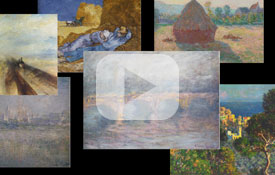by Rolf Coulanges BVK
Part 1: Introduction
The term texture comes from the Latin word textura and describes the inner structure and context of a tissue, today also that of a virtual structure. This structure is transmitted to the outside via the surface of the fabric, but only as an external expression of the inner coherence that characterizes the medium in its outer appearance.
The texture is therefore not to be confused with the content of the digital image, its colouring, its contrast, its luminosity.
Vincent van Gogh Midday rest 1890
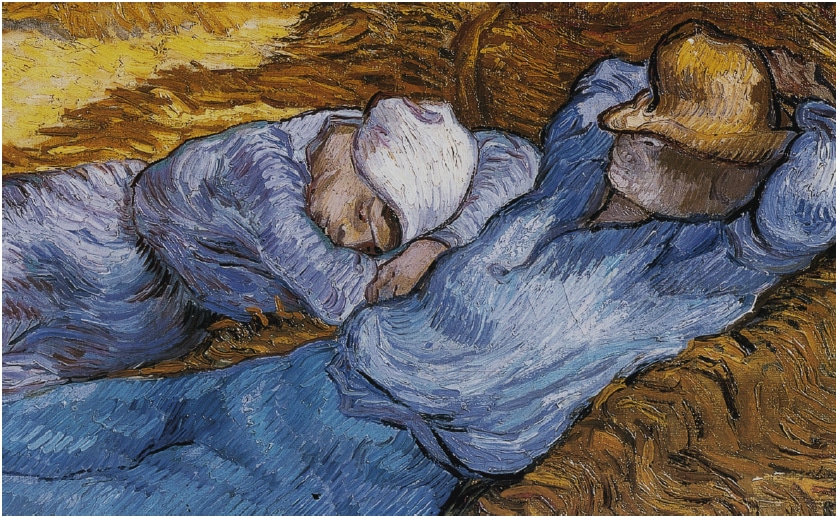 Detail from Original
Detail from Original
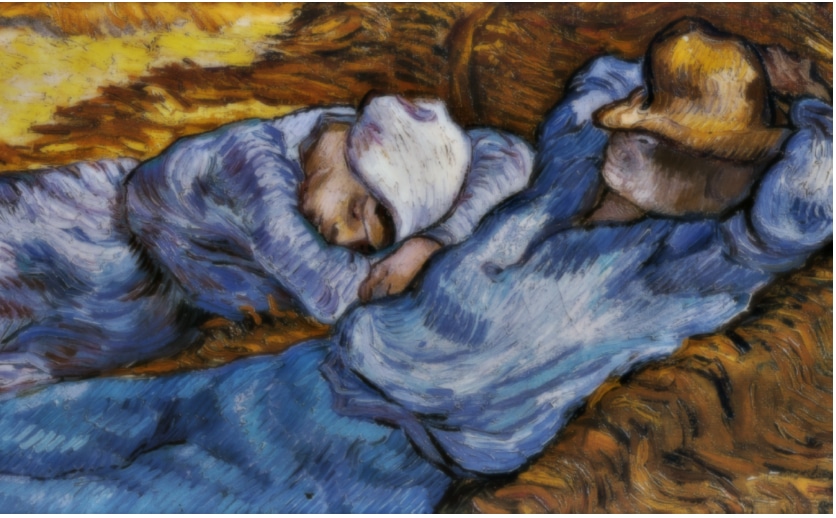 Detail modified: texture reduced
Detail modified: texture reduced
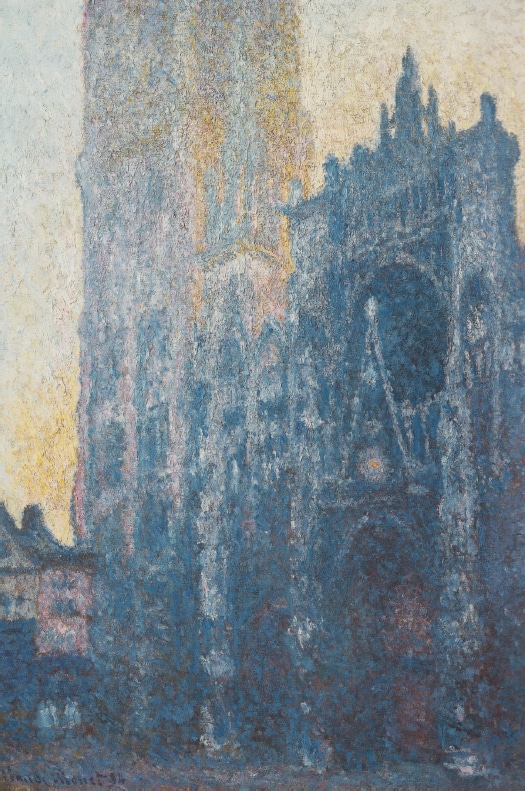 |
The best comparison to explain the texture can be made with painting: the painter can create the texture of his
Claude Monet The Cathedral of Rouen 1894 |
The texture can even lead to the fact that the effect of the picture and its colours only emerges completely in the eye of the observer. In 1857, the French painter Eugene Delacroix, whose ideas inspired the use of textures in painting, gave a vivid justification for the effect of a texture as a special way of painting: “The splash of colour on the brush only blends into the whole from a certain distance, but it gives the painting an accent that the mixture of colours cannot produce”. Van Gogh, too, believed that the texture of colours applied individually to the canvas, seen from a distance, through their mixture in the eye of the viewer, achieves a much greater intensity of colour than the same colours mixed on the palette before application. Waterloo Bridge, Effet Rosé 1904 | 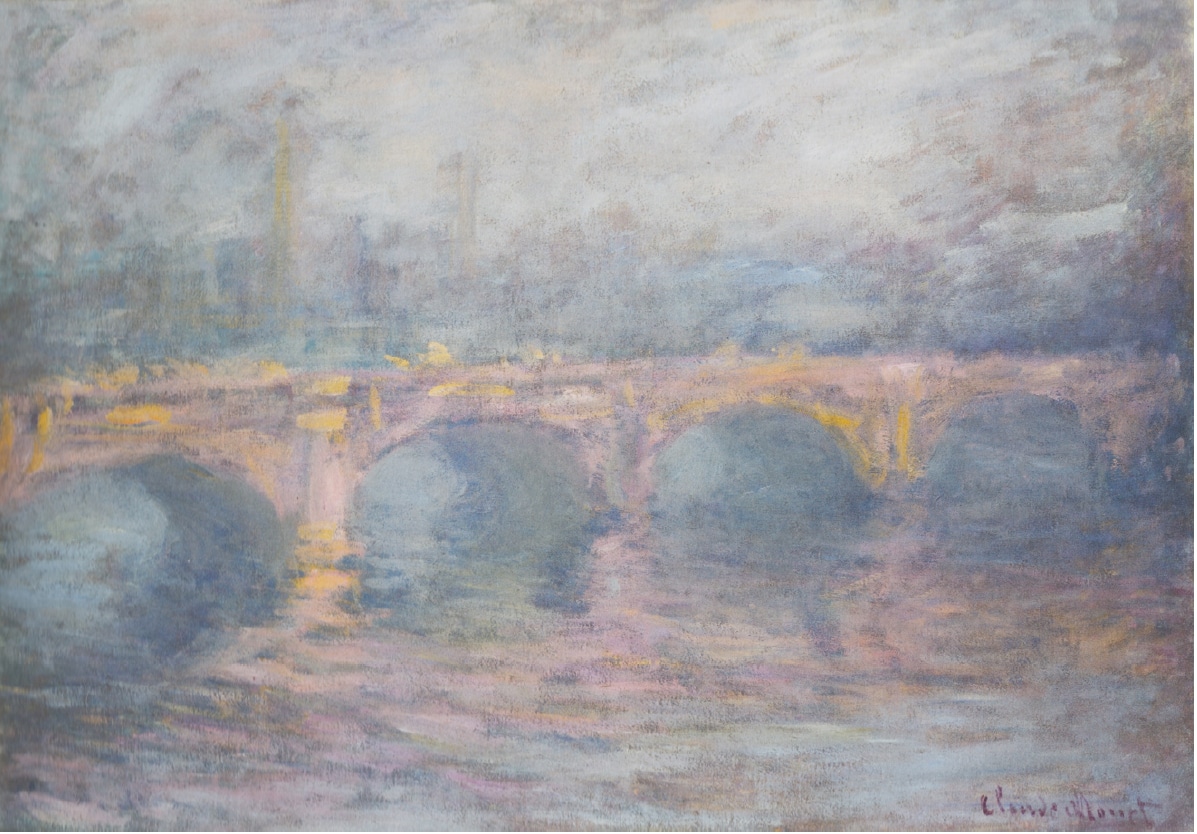 |
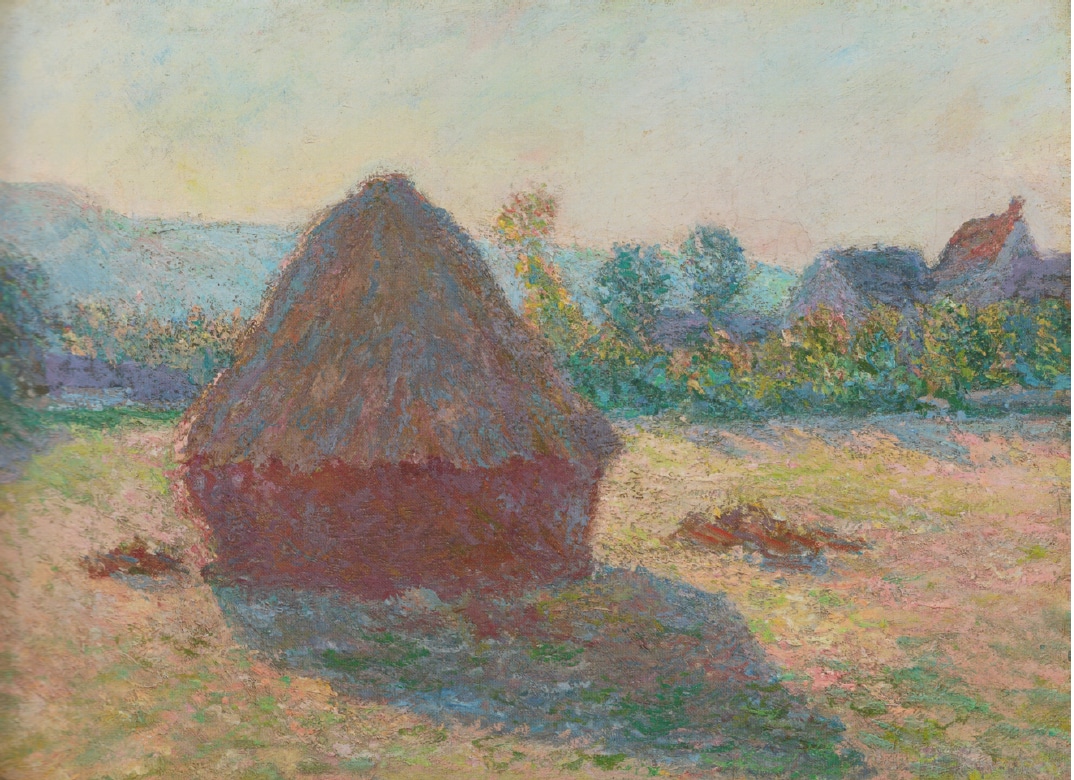 |
The heated discussion in the 19th century about the yes or no to the creation A Haystack in the Evening Sun 1891 |
Abstraction, which made Impressionism its design principle,
Le Parlement, Coucher de Soleil 1904 | 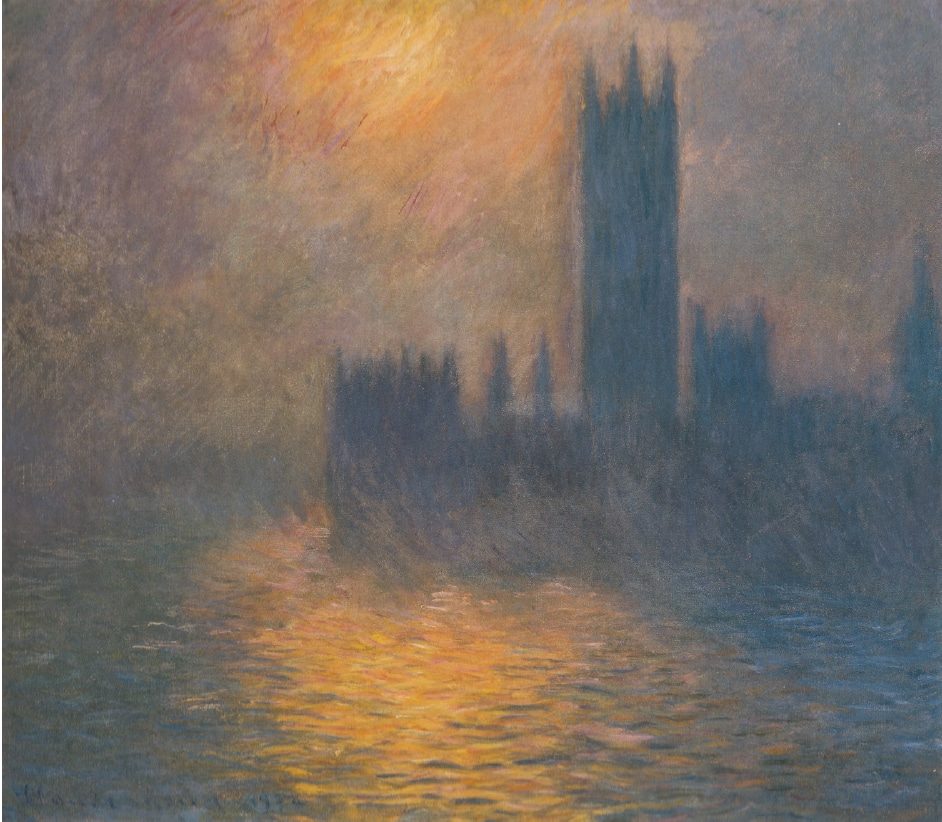 |
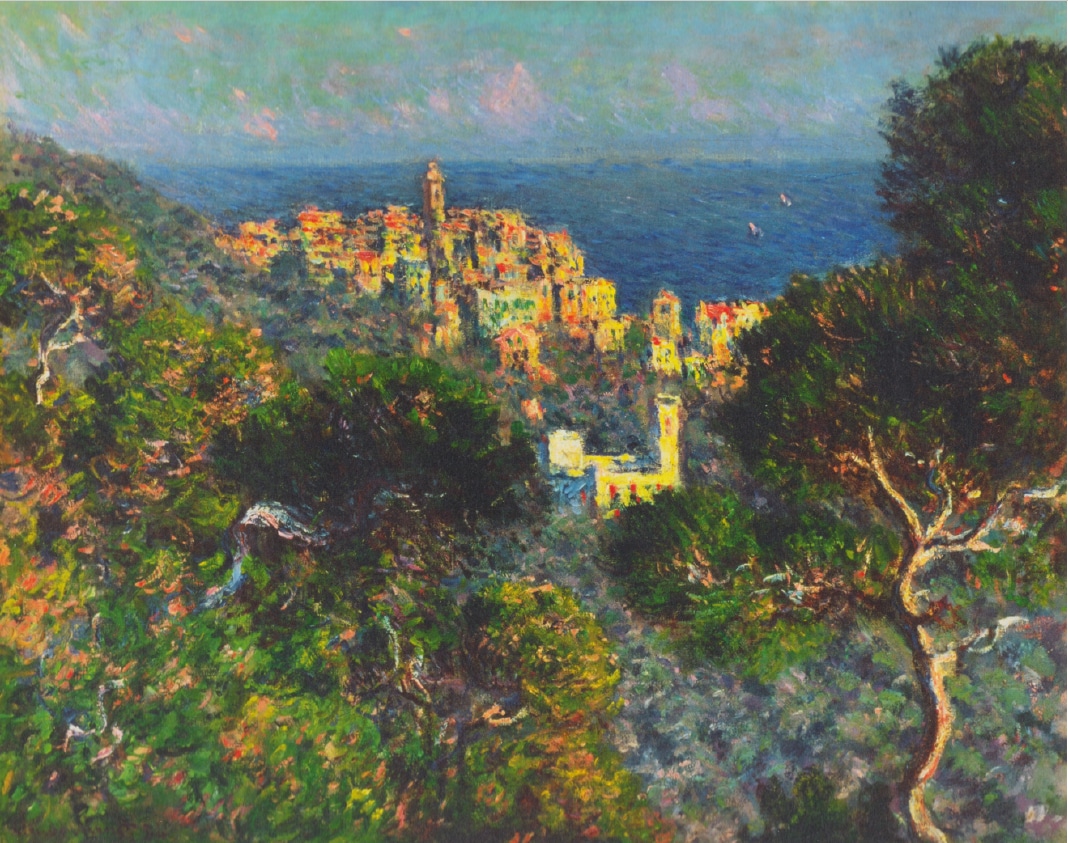 | 150 years after the revolution that Impressionism brought to painting,
Vue de Bordighera 1884 |
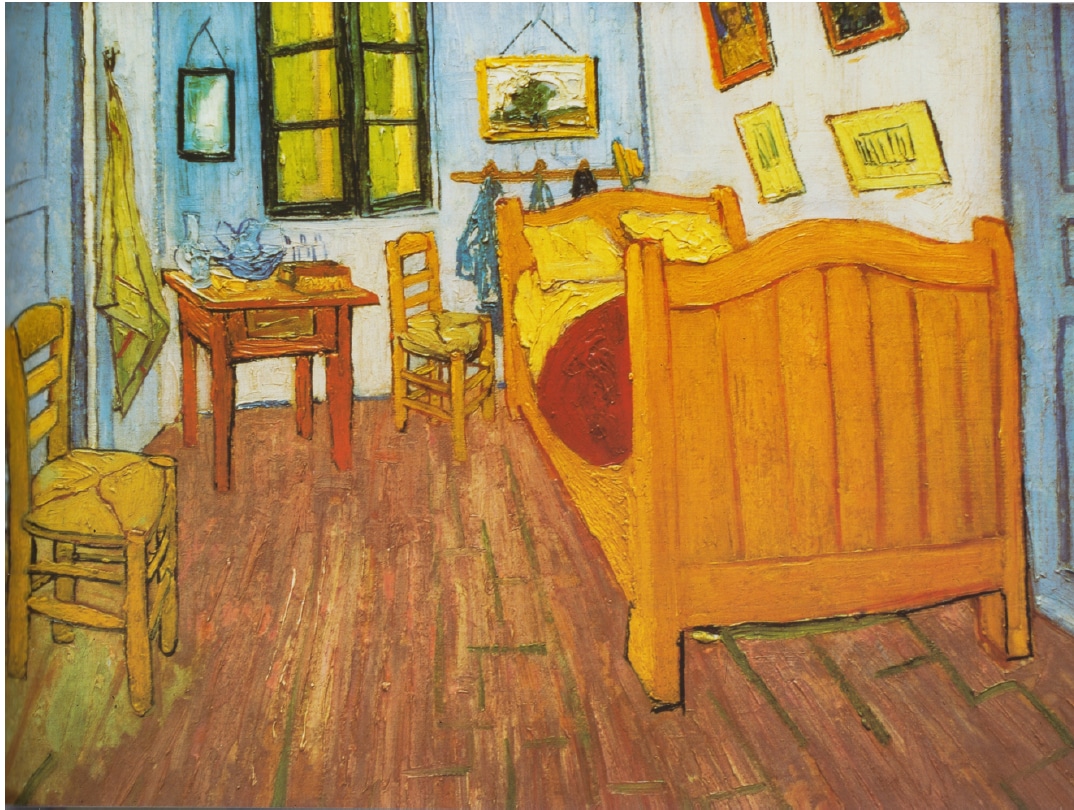 | However, our possibilities are currently still very limited compared to those of painting: we can only create textures that can be generated from the data that the camera’s sensor can record with its specific properties.
Vincent van Gogh Bedroom in Arles 1888 |

Bedroom in Arles: Texture details
A thick brushstroke in a painting by van Gogh, which through its physical presence enables the picture to “break out” as an abstraction from the style of painting oriented towards realism, can only be represented with the digital camera as a pattern composed of many individual partial image areas. The “violation” of the real image of the motif, which painting undertook with Impressionism in order to create the artistic freedom through abstraction that enabled a modified representation of the motif, is not provided for in the recording technology of our digital images. At present, the elements of a texture that determines and also changes the image in the background can only be extracted from the inherent elements of the rasterized image. Painting, on the other hand, with the invention of texture as a central element in the creation of its new view of the world, had just undertaken the farewell, the overcoming of the reproduction of detail; the destruction of the realistic image in favor of abstraction as a step into new image spaces and the expression of a new perception of the present.
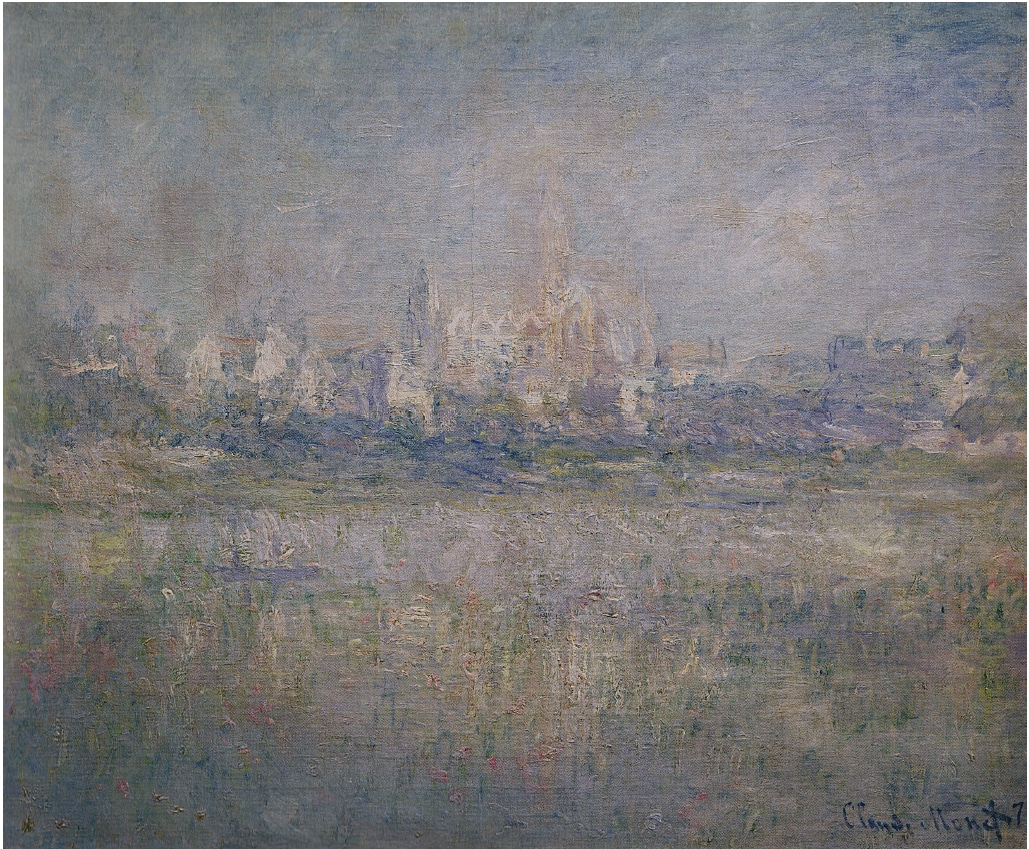
Claude Monet Vétheuil in the fog 1879
Texture, however, is not only an element of modern painting, but is also the underlying structure of every digital image. It is the recording apparatus itself that, through its construction and its particularity, bases image processing on a texture of the image. It cannot be described as image content and is therefore usually not explicitly perceived or discussed. In classical photography we admire prints on baryta paper or old pictures on glass plates, let ourselves be impressed by colour prints in art books or finally go to the art gallery to see
paintings in their colourfulness and with their actual haptic surface. It is always about the perception of textures that have entered into an inseparable connection with the depicted and that not only change the images, but also our sensation in perception.
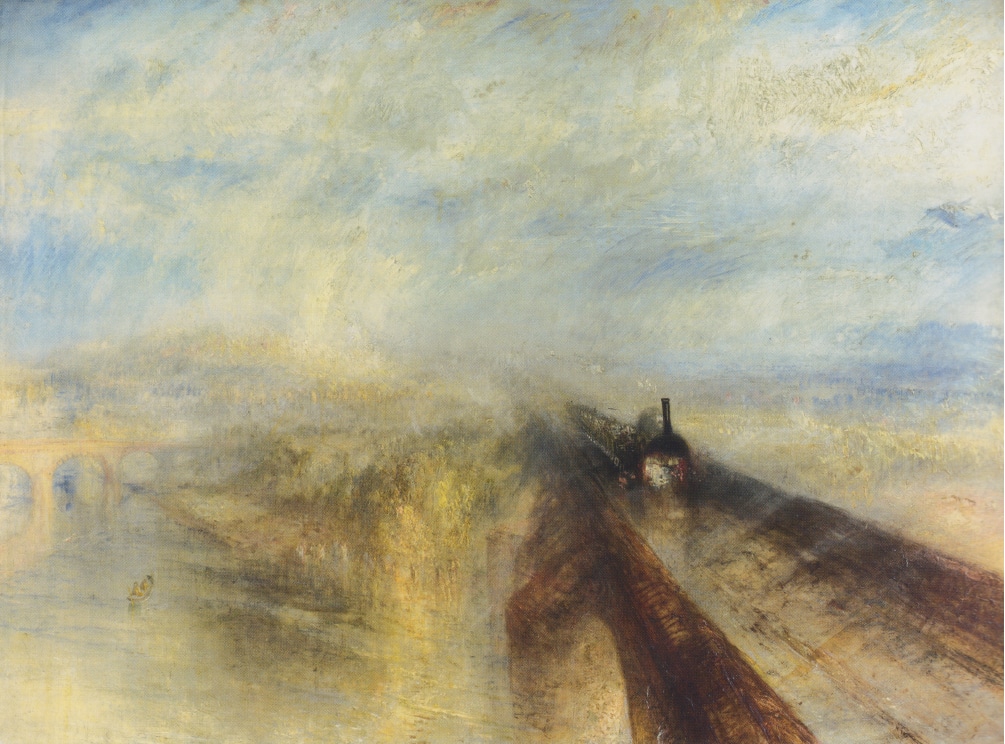
William Turner Rain, Steam, and Speed – The Great Western Railway 1844
The texture determines an image and can also change it – I would like to show you this with some scenic examples. The texture is not an effect, but an integral and sensitive element of the image design, and that’s why you have to take a good look to notice the changes that might change the movie deeply.
followed by:
Part 2: Textures from Painting to Digital Images
13 short film sequences with differently created textures
Part 2: Movie file on Vimeo
© 2019 Rolf Coulanges
